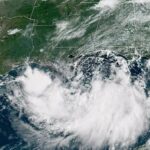Good Afternoon Directors – (Courtesy NEMA via RIEMA Director Peter Gaynor)
The Disaster Recovery Reform Act (DRRA) was first discussed in detail during the Mid-Year. Since that time, you’ve seen updates from the NEMA-DC office and heard Brock mention it repeatedly.
HR302_NEMA-Sec-by-Sec-Summary-180924.pdf
PressRelease_NEMA-IAEM_DRRA-180925.pdf
Over the weekend, House and Senate negotiators come to agreement on the final version of the DRRA, and while there are still some provisions we may have done slightly differently, the consensus on this bill among you all has to not let perfect be the enemy of progress. To that end, NEMA has remained an active partner in developing and supporting this legislation. Attached is a summary from the Legislative Committee which lays out the majority of the provisions. In that summary are links to the full bill text and documents from the Congressional committes. I am also including a copy of the joint press release just put out by NEMA and IAEM.
The DRRA is Division D of H.R. 302, the FAA Reauthorization Act of 2018. I anticipate this seeing initial legislative action on the House floor tomorrow. The Senate will follow suit sometime shortly thereafter. Therefore, here are the actions you can take to ensure EMPG is reauthorized, we see massive increases in PDM when 6% of disaster costs are put into the account, and management costs are increased to 15% (HMGP) and 12% (PA).
Actions to take:
Call your Members of Congress – House and Senate. Contact information can be found at www.house.gov [house.gov] and www.senate.gov [senate.gov].
Urge them to support H.R. 302, the FAA Reauthorization Act of 2018, particularly Division D, the Disaster Recovery Reform Act.
If you are Twitter, be sure you follow @NEMA_DC and @NEMA_web and retweet as you see fit, or develop your own messages.
Talking Points:
The DRRA will fundamentally change how we mitigate against disasters in this country. Most mitigation is currently done after a disaster through HMGP. The DRRA will allow 6% of disaster costs to be spent on pre-disaster mitigation and therefore make our infrastructure more resilient.
Currently, the amount of disaster grants allowed to be used to manage the expansive grant requirements is 3.34%. This is woefully inadequate. One of the DRRA provisions increases this amount to as much as 15%. This increase is still far below the actual need (ie, FEMA uses up to 20%), but will help states and locals build capacity and more effectively manage disasters.
The DRRA includes a provision that will allow us to better mitigate against future wildfires (allows for HMGP on FMAGs)
Several provisions address the need for states and locals to enhance the latest building codes to ensure built structures can withstand the appropriate hazard risks for the region.
The requirement to address unified federal review of environmental and historic preservation requirements will reduce the need for grantees to gain approval from multiple and overlapping Federal agencies when repairing disaster damage.
Those hit the high points. Of course, feel free to sift through the attached summary and pick-out any other talking point that may be near and dear to your heart.
Time is of the essence – the House is due to vote on this tomorrow with the Senate following shortly thereafter.


